Motu proprio ‘maiorem hac dilectionem’
and the holiness of the camillian consecration
The Relationship between this Document of the Magisterium and the Fourth Vow of the Camillians
 On 11 July 2017 Pope Francis signed the Motu Proprio Maiorem hac dilectionem on offering one’s own life for others persevering unto death as a means of achieving canonical holiness. This perfectly reflects the words of the Camillian consecration ‘and I promise to God that I want to serve the sick even at the risk of my life’.[1]
On 11 July 2017 Pope Francis signed the Motu Proprio Maiorem hac dilectionem on offering one’s own life for others persevering unto death as a means of achieving canonical holiness. This perfectly reflects the words of the Camillian consecration ‘and I promise to God that I want to serve the sick even at the risk of my life’.[1]
This Motu Proprio begins with a quotation from John 15:13 ‘Greater love has no man than this, that a man lay down his life for his friends’ and observes that voluntarily and freely offering one’s life for others, persevered with unto death, is a ‘true, complete and exemplary’ imitation of Christ and thus deserves to be admired and imitated. This offering of one’s own life thus becomes a ‘means’ by which to achieve the goal of every Christian – holiness.
For this reason, Pope Francis (cf. art 1) adds to the two prior conditions for beginning the procedure of beatification and canonisation,[2] namely martyrdom (red martyrdom) and the heroism of virtues (white martyrdom), also the ‘offer of life’ (cf. art. 3). This phrase ‘offer of life’ is explained in article 2 of the Motu Proprio: ‘a free and voluntary offer of life and heroic acceptance propter caritatem of a certain and untimely death’. What is this offer if not the fourth vow of the Camillians which led more than 300 religious to the martyrdom of charity?
To this offer propter caritatem (for charity) with the acceptance of death we can associate very many heroes of Camillian charity such as Giovan Battista da Gaeta, Serafino da Lucca and Angelo delle Marche who died as martyrs to charity because of an infection of petechial typhus in the Bay of Pozzuoli in 1589.
In addition we may cite Leandro from Ferrara, Orazio from Florence, Orazio from Naples, Michele from Puglia and Orazio, a novice from Umbria who died of cholera in Rome, in the Hospital of St. Sixtus in 1591.
And then there was Fr. Cesare Vici who died together with another four brothers in the year 1600 of the plague in Nola (Campania).
In 1630, during the plague described by Manzoni, ten Camillian religious died in Mantua, eighteen in Milan, seven in Bologna, six in Mondovì, five in Rome, four in Borgonuovo, three in Florence, and one in Lucca.
The following died in fragrance of holiness because they had been infected: Fr. Francesco Corradi (1618), Fr. Giovan Battista Marapodio (1630), Br. Giacomo Giacopetti (1657), and Br. Pietro Suardi (1656).
Very many others have dedicated their lives heroically to the sick: Br. Bernardino Norcino, Fr. Francesco Pelliccioni, Fr. Ilario Cales, the Servant of God Fr. Martino de Andrés Pérez, the Servant of God Camilla Rosa Maria Grimaldi, the Servant of God Girolamo Tiraboschi, the Servant of God Saverio Pietrangeli, the Servant of God Fr. Rocco Ferroni, the Servant of God Maria Aristea Ceccarelli, Fr. Camillo Cesare Bresciani, Fr. Stanislao Carcereri, Fr. Antonio Michalak, Br. Pietro Vecoli, Fr. John Cleary, Fr. Primo Fiocchi, Br. Marcelo Caon, the Servant of God Germana Sommaruga, Fr. Alexandre Toé, Fr. Celestino Di Giovanbattista, and Br. Ettore Boschini.[3]
Canonical Camillian Holiness
 Naturally, to speak about canonical holiness the offer of a person’s life is not enough if there has not already been demonstrated an ‘ordinary’ level of the Christian virtues, the fame of holiness after death, and a post-mortem miracle by intercession of that Servant of God (cf. art. 2). In article 6 of the Motu Proprio all the articles of the Causes of Saints are described (articles 7; 10.1; 10.3; 15a; 15b; 19; 32; 36), to which is added the phrase ‘offer of life’ between the words ‘virtues’ and ‘martyrdom’. One can thus see clearly the same dignity and value of these three terms or means for the proclamation of canonical holiness. In other words, we can consider as being on the same level St. Cecilia who was a martyr to her faith (red martyrdom to faith); St. Jerome who was heroic in his theological virtues (white martyrdom to hop hope); and St. Damian de Veuster or any Camillian religious who died helping the sick (martyrdom to charity).
Naturally, to speak about canonical holiness the offer of a person’s life is not enough if there has not already been demonstrated an ‘ordinary’ level of the Christian virtues, the fame of holiness after death, and a post-mortem miracle by intercession of that Servant of God (cf. art. 2). In article 6 of the Motu Proprio all the articles of the Causes of Saints are described (articles 7; 10.1; 10.3; 15a; 15b; 19; 32; 36), to which is added the phrase ‘offer of life’ between the words ‘virtues’ and ‘martyrdom’. One can thus see clearly the same dignity and value of these three terms or means for the proclamation of canonical holiness. In other words, we can consider as being on the same level St. Cecilia who was a martyr to her faith (red martyrdom to faith); St. Jerome who was heroic in his theological virtues (white martyrdom to hop hope); and St. Damian de Veuster or any Camillian religious who died helping the sick (martyrdom to charity).
Holiness is everything or everyone connected to God (the only perfectly holy being); in the Catholic Church holiness is the universal vocation of Christians, through baptism, adoption as sons, and justification (cf. Wikipedia). Holiness is therefore a call to a journey of conversion of one’s image to a full resemblance to the ‘life of Christ’ and not mere static imitation.[4] The synthesis of the life of Christ, as is observed by Fr. Giuseppe Cinà in his course on theological anthropology, is pro-existence, life for the other unto the end. This end says Pope Francis is to accept freely and voluntarily a certain and untimely death with the intention of following Jesus in charity (articles 2a and 2b).
Therefore what the Camillian consecration has already experienced for four centuries, namely the fourth vow as Camillian holiness, the entire Church today recognises as a source of universal canonical holiness. Here there comes to mind the book on the fourth vow by Fr. Emidio Spogli;[5] the text of Fr. Felice Ruffini on ‘martyrs to charity;[6] what Fr. Ercole Meschini wrote about the heroism of charity of ‘Camillians on battlefields); my article on ‘the fourth vow today’;[7] and very many texts that explicitly and specifically talk about Camillian heroic charity.
In addition, the Motu Proprio makes us think about charity not as simply ‘doing something that is morally good’. One is not talking about a heroic succession of virtuous actions to help the needy or heroic social action performed in the name of human solidarity or some philosophical ideology. But, rather, of charity based upon faith in Christ and on a change in the ontology of the person, his or her profound being, his or her essential nature, as is explained by the Salesian Savino Palumbieri in his text ‘I love therefore I am’:[8] charity that gives authentic being and identity.
All of this cannot come from purely human reflections. It has to come directly from the Word of God. In Matthew 25:31-46 Jesus shows that the criterion of the final judgement (salvation or damnation) is based upon works of mercy for other people. In 1 John 3:16 St. John writes: ‘This is how we know what love is: Jesus Christ laid down his life for us. And we ought to lay down our lives for our brothers and sisters’.
The Retrieval of the Unity of Christian Knowledge and the Christian Life
Maiorem hac dilectionem rediscovers charity in the unity of the Christian life. The cultural events of history and the history of philosophy have dualised the Christian life into the life of faith and practical life; acting in the Church (liturgy, catechesis, adoration, devotions, Biblical studies) and in the world (social pastorals care or forms of pastoral care involving service: pastoral care in health; justice and peace; elderly people; work; native peoples; immigrants; ecology; prisons, beggars; alcohol and drugs; collective emergencies; the abuse of minors; abortion; and ethical problems, etc.).
Indeed, at times there is even a need to defend the rights and the value of pastoral theology against dogmatic theology.[9] This Western duality of Platonic origins: matter-spirit, body-mind, heaven and earth, the divine and the human, has had grave repercussions in history which have been visible in separations between life and faith, faith and reason, contemplative and active consecrated life, action and prayer (Martha and Mary), and the missionary role of a Christian in the world and interior life. These are all tensions that the Church has had – and has – to address constantly with official documents in order to restore doctrinal balance and truth. For this reason, a Motu Proprio that places the pro-existence of a Christian at the centre of things, and as an end of his or her holy life, is prophetic and important, retrieving anthropologically and theologically the unity of life where dualisms are integrated in a theopatic mysticism,[10] in an epestasi[11] (or mysticism of action), as has been shown to us by hundreds of saints, blessed and heroes of charity for the sick over these two thousand years of history of charity in the world of health and health care.[12] The saints of charity for the needy and the suffering,[13] who are many more in number than the saints of charity for the sick, confirm and deepen this truth of the holiness of pro-existence following the example of Jesus.
The Camillians during their four centuries of history have always been united about the value of the fourth vow and the belief that serving the sick when this places their lives at risk is a source of holiness. They have believed this and lived and practised it until today: during the sixteenth and seventeenth centuries when there was the plague, cholera, typhus and syphilis; during the eighteenth century when there was typhus, cholera and smallpox; during the nineteenth century when there was tuberculosis; during the twentieth century when there was AIDS; and during the twenty-first century when there has been Ebola. The secularist post-modern world, which is very resistant to believing, requires signs that demonstrate the strength and the truth of spirituality; 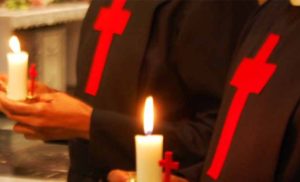 radical pro-existence following the example of Christ: the offer of one’s life unto death or danger to one’s life in a context of faith is one of these signs. Someone could make an accusation of religious fanaticism (as though one was dealing with suicide bombers) but within spiritual-religious equilibrium where the value of charity is shown to be a religious value that is higher that the ethical-moral value of human life everything has a logic and a meaning in the hierarchy of values.
radical pro-existence following the example of Christ: the offer of one’s life unto death or danger to one’s life in a context of faith is one of these signs. Someone could make an accusation of religious fanaticism (as though one was dealing with suicide bombers) but within spiritual-religious equilibrium where the value of charity is shown to be a religious value that is higher that the ethical-moral value of human life everything has a logic and a meaning in the hierarchy of values.
On 25 May 1994, the General Consulta of the Order of Camillians, under the prophetic leadership of Fr. Angelo Brusco, instituted the day of ‘Camillian religious martyrs to charity’. Today, twenty-three years later, the universal Church as well, through the official words (the ordinary Magisterium) of Pope Francis recognises this holiness and indirectly recognises the divine and charismatic inspiration of St. Camillus in instituting the fourth vow (as a fundamental vow of the Camillian consecration), in living it, and in handing it down to future generations.
To consecrate oneself as a man or woman Camillian to being a man or woman Camillian today with all its charismatic originality[14] adds, thanks to this Motu Proprio, the feeling of being fully in the canonical holiness of the Catholic Church.
Fr. Pietro Magliozzi MI
[1] Cf. Rituale O.CC.RR.M.I. 1994, Formula della professione religiosa, p. 32.
[2] Cf. Giovanni Paolo II, Divinus perfectiones Magister, Costituzione Apostolica, circa la nuova legislazione per le cause dei santi, 25/1/1983 (AAS, LXXV 1983, 349-355).
[3] Cf. Testimoni di caritá della Famiglia Camilliana (Curia Generalizia Camilliana, 2007).
[4] Cf. P. Magliozzi, Líbranos del mal. Traumas, carne, mentiras, cultura y demonios (San Pablo, Santiago de Chile, 2016), pp. 222-248.
[5] Cf. E. Spogli, La diakonia di carità dell’Ordine Camilliano (Religiosi Camilliani, Rome).
[6] Cf. F. Ruffini, La vita per Cristo (Ed. Camilliane, Turin, 1993).
[7] Cf. P. Magliozzi, ‘Il quarto voto camilliano oggi’, Camilliani/Camillians, 3-4/2014, pp. 105-109.
[8] Cf. S. Palumbieri, Amo dunque sono, presupposti antropologici della civiltà dell’amore (Paoline, Milan, 1999).
[9] Cf. L. Sandrin, Teología pastoral. Lo vio y no pasó de largo (Sal Terrae, Centro de Humanización de la salud, Tres Cantos (Madrid), 2015), p. 77.
[10] Cf. P. Magliozzi, ‘L’esperienza mistica del camilliano oggi, L’unum necessario’, Camilliani/Camillians 3/2012, pp. 82-88. Theopatic mystics who cared for the sick are: in the twelfth century St. Hildegard; in the thirteenth century, St. Francis of Assisi, Hadewijch of Antwerp, St. Angela of Foligno; in the fourteenth century Riccardo Rolle; in the fifteenth century St. Catherine of Genoa; in the sixteenth century St. Mary of the Incarnation, St. Rose of Lima.
[11] Epestasis: to move towards, which is different from enstasis (en: to enter, inside: to be inside oneself) or ekstasis (ex: to go out of oneself and reality for a contact with God is to exit from oneself, to transcend oneself towards God) Epestasis (epi: above, again – stasis: stability, connection) is dynamism of an ekstasis in the world, in daily life, it is mysticism walking in the world (Phil 3:13 launching myself…); epistasis is also: living every gesture of service starting from the centre (with compassion); it is dynamism of the insatiable desire for God and union with Him (expanding the heart to receive God) in charity to neighbor. One does not gratify oneself as in the case of need in order to silence them, but one expands the heart to receive him more and increase thirst.
[12] Cf. P. Magliozzi, Santos de la salud. Al cuidado de la vida. Tesoro y milagro de la Iglesia (San Pablo, Santiago de Chile, 2015); R. Messina, Storia della caritá, cuore della Chiesa (Ed. Camilliane, Turin, 2001).
[13] Cf. F. Agnoli, La grande storia della carità (Cantagalli, Sienna, 2013). Cf. L. Mezzadril and L. Nuovo, Storia della carità (Jaca Book, 1999).
[14] Making a hospital a sacred place – looking for mysticism in service to the sick (epestasis) – professionalising pastoral care to an academic level and teaching it to others (Camillianum) – achieving the integral character of service to the sick (an interdisciplinary approach, fathers and brethren in a work team) – demonstrating heroism of charity unto martyrdom (fourth vow) – evangelising by healing and healing by evangelising (the evangelical integral healing of Christ the physician) – teaching the happiness and enthusiasm of serving the sick (how to accept and fight in suffering with a helping relationship, how to give a theological meaning to suffering).



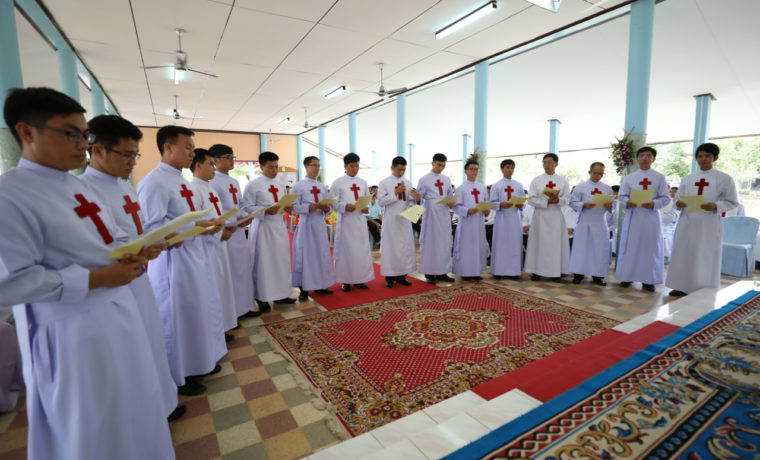






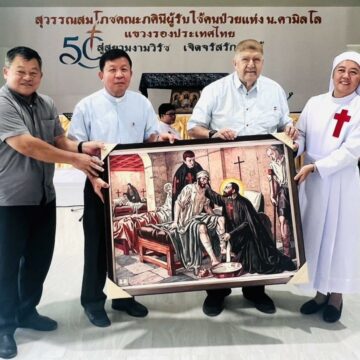
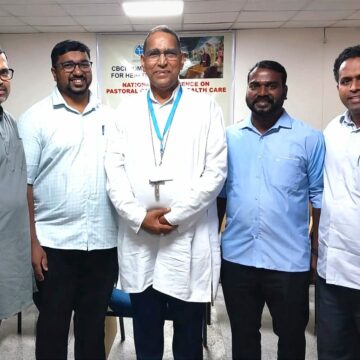
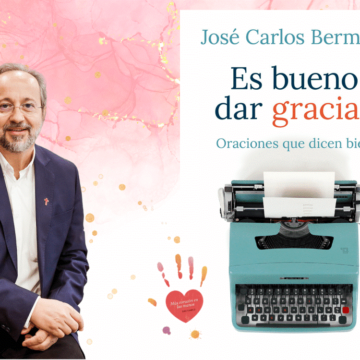

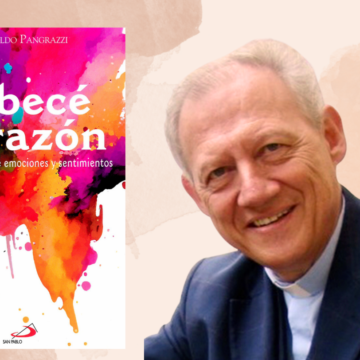
Camillians on Facebook
Camillians on Twitter
Camillians on Instagram